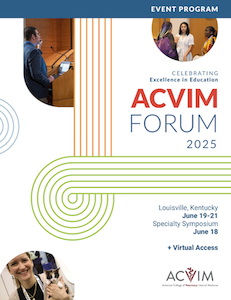Cardiology
(C23) Incidence and Risk Factors of Postoperative New-Onset Atrial Fibrillation in Dogs Undergoing Mitral Valve Repair
Thursday, June 19, 2025
4:10 PM - 4:25 PM ET
Location: Exhibit Hall Poster Park - Kiosk 11

Kentaro Kurogochi, DVM, PhD
Research Fellow
North Carolina State University
Yokohama-city, Kanagawa, Japan
Research Abstract - ePoster Presenter(s)
Abstract:
Background: Postoperative new-onset atrial fibrillation (POAF) is a potential complication following cardiac surgery. However, information on its occurrence in veterinary practice remains limited. Hypothesis/
Objectives: To describe the characteristics of POAF following mitral valve repair (MVR) in dogs and to identify potential preoperative clinical risk factors associated with its occurrence. Animals: Dogs that underwent MVR between January 2020 and December 2023.
Methods: This is a retrospective cohort study. Dogs with preoperative atrial fibrillation or those that died intraoperatively were excluded. The duration of POAF was documented, and potential risk factors of POAF were investigated based on preoperative clinical parameters.
Results: A total of 1,580 cases were included. POAF was observed in 100 cases, categorized as the POAF group, while the remaining 1,480 cases were classified as non-POAF group. The duration of POAF lasted less than 24 hours in 88 cases (88%), and only three cases (3%) persisted for over one month postoperatively. Possible independent risk factors for POAF included being male (risk ratio [RR], 1.74; 95% confidence interval [CI], 1.12 to 2.70, P = 0.008), body weight (RR, 1.17; 95% CI, 1.04–1.32, P < 0.001), and left ventricular end-diastolic internal diameter normalized to body weight (RR, 1.11; 95% CI, 1.02–1.21, P = 0.018). Conclusions and Clinical Importance: POAF occurred in 6.3% of canine MVR patients. Among these dogs, 88% returned to sinus rhythm within 24 hours postoperatively. Male, greater body weight, and preoperative left ventricular enlargement may be associated with the development of POAF.
Background: Postoperative new-onset atrial fibrillation (POAF) is a potential complication following cardiac surgery. However, information on its occurrence in veterinary practice remains limited. Hypothesis/
Objectives: To describe the characteristics of POAF following mitral valve repair (MVR) in dogs and to identify potential preoperative clinical risk factors associated with its occurrence. Animals: Dogs that underwent MVR between January 2020 and December 2023.
Methods: This is a retrospective cohort study. Dogs with preoperative atrial fibrillation or those that died intraoperatively were excluded. The duration of POAF was documented, and potential risk factors of POAF were investigated based on preoperative clinical parameters.
Results: A total of 1,580 cases were included. POAF was observed in 100 cases, categorized as the POAF group, while the remaining 1,480 cases were classified as non-POAF group. The duration of POAF lasted less than 24 hours in 88 cases (88%), and only three cases (3%) persisted for over one month postoperatively. Possible independent risk factors for POAF included being male (risk ratio [RR], 1.74; 95% confidence interval [CI], 1.12 to 2.70, P = 0.008), body weight (RR, 1.17; 95% CI, 1.04–1.32, P < 0.001), and left ventricular end-diastolic internal diameter normalized to body weight (RR, 1.11; 95% CI, 1.02–1.21, P = 0.018). Conclusions and Clinical Importance: POAF occurred in 6.3% of canine MVR patients. Among these dogs, 88% returned to sinus rhythm within 24 hours postoperatively. Male, greater body weight, and preoperative left ventricular enlargement may be associated with the development of POAF.


